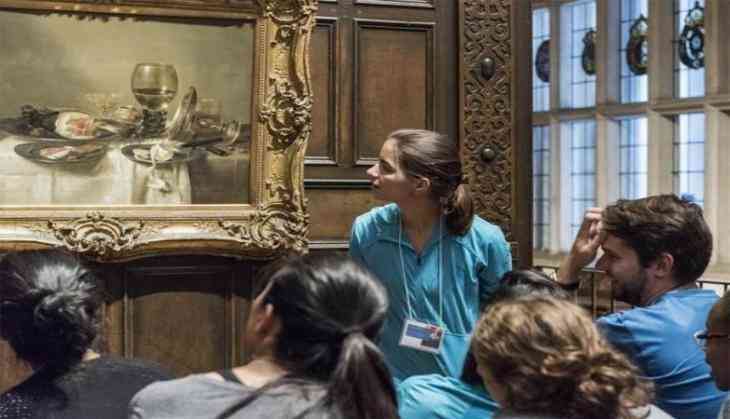
Observation skills are an essential component of any medical education, aiding doctors during patient exams and in making medical diagnoses, yet several studies have indicated inadequacies in this area among medical trainees and practicing physicians.
In an effort to explore ways to improve these skills among medical students, researchers from Perelman School of Medicine at the University of Pennsylvania and Children's Hospital of Philadelphia (CHOP), in collaboration with educators at the Philadelphia Museum of Art, turned to the field of visual arts to examine if training in art observation, description, and interpretation could be applied to medical training.
In a study, researchers drew from previous studies that suggested art observation could improve medical students' descriptive skills and applied formal research methods to evaluate extensive art training among first-year medical students.
The team saw significant improvement in observational recognition skills among students who took an art observation course and demonstrated that art training alone - without a clinical component - could help teach medical students to become better clinical observers.
"The skills I learned studying fine arts in college are invaluable to me now as a physician. I saw the impact art education had on my approach to medicine, and I wanted to recreate that experience for others in the field," said lead author Jaclyn Gurwin from the University of Pennsylvania. "The results of this study are incredibly encouraging, showing that art observation training can improve medical and ophthalmological observational skills. We hope that the improved observational abilities from this training will translate to improved clinical effectiveness, empathy and, ultimately, will make better physicians."
Thirty-six first-year medical students were randomly assigned to take six, 1.5-hour art observation courses at the Philadelphia Museum of Art or to be a part of a control group that received no formal art observation training. The art sessions were taught by professional art educators using the "Artful Thinking" teaching approach, which emphasizes introspection and observation before interpretation. Instruction included sessions in front of works of art, group discussions, and training in visual arts vocabulary. The Artful Thinking approach also emphasizes lessons that encourage particular kinds of thinking such as creative questioning, reasoning, and perspective taking.
All 36 subjects completed an observation skills test before being divided into the randomized groups and then took the test again at the end of the course. The assessments included description testing and emotional recognition testing of retinal and facial disease photographs. Students who took the "Artful Thinking" course showed a significant improvement in their observational skills as compared to the control group.
In a post-study questionnaire, students who received the art training indicated that they had already begun to apply the skills used in the course in clinically meaningful ways as first-year medical students.
"After just one session, I found myself listening to a radiologist discuss the same principles we used to look at art when analyzing a CT scan," said one student. "Later I found our practice of creating narratives in the art class helped guide me when interacting with standardized patients."
The authors noted that one common theme among trainees is that making accurate observations or diagnoses when presented with complex visual information can be challenging. The art observation training in the study provided a structured approach for first-year medical students, who have limited experience in navigating visually complex clinical situations.
"Art training could be helpful across many specialties, especially ones like ophthalmology, dermatology, and radiology, where diagnosis and treatments plans are based primarily on direct observation," said senior author Gil Binenbaum.
The study is published in Ophthalmology.
-ANI


